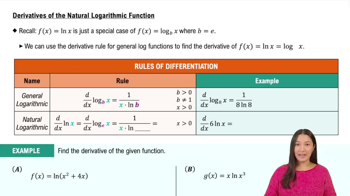2–74. Integration techniques Use the methods introduced in Sections 8.1 through 8.5 to evaluate the following integrals.
9. ∫ (from 0 to π/4) cos⁵ 2x sin² 2x dx
 Verified step by step guidance
Verified step by step guidance Verified video answer for a similar problem:
Verified video answer for a similar problem:



 8:38m
8:38mMaster Indefinite Integrals with a bite sized video explanation from Patrick
Start learning